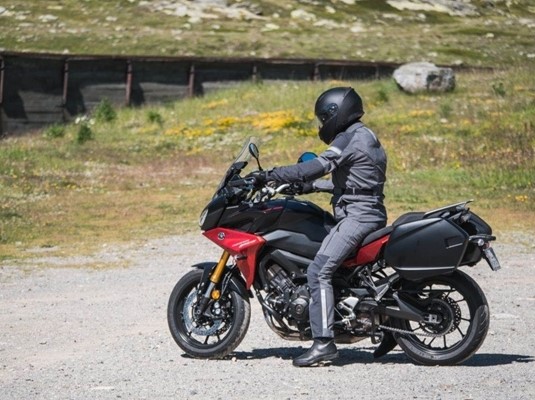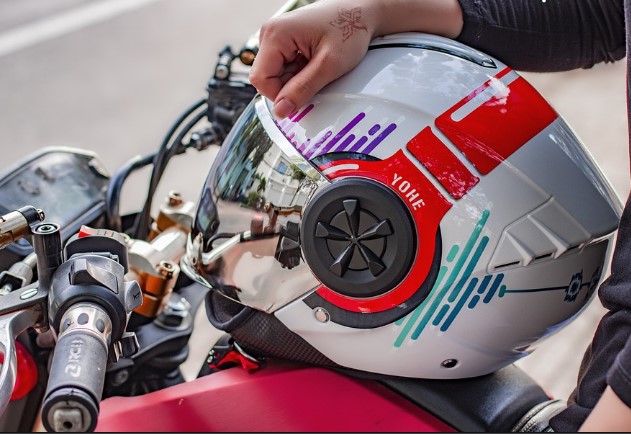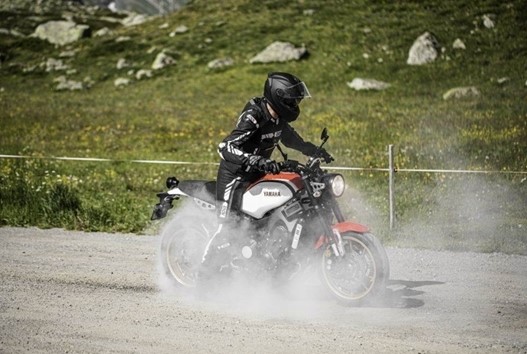The Yogi motorcycle helmet is no doubt the most important and effective safety measure that every motorcyclist should invest in. In fact, there is no other type of motorcycle gear that offers more return on investment and more protection if a crash takes place. It is the very reason why helmets must never be purchased based on their appearance or price tag alone. Riders must always buy helmets with the best fit and highest rating that suits their budget.
Buying a helmet calls for some amount of research for you to understand the various shapes so that you can find the perfect fit. Before anything else, it is recommended that you have a good idea about safety ratings. Motorcycle helmets that were approved for use in the US come with DOT or Department of Transportation rating. The ECE or Economic Commission for Europe and Snell are two other safety ratings recognized. ECE and Snell follow more rigorous testing although it doesn’t necessarily mean that helmets approved by the DOT are not as safe and secure for highway travel.

The best type of helmet is something that has a comfortable fit and lets you enjoy riding your motorcycle without affecting your range of motion or your ability of performing the essential functions for a safe operation of a motorcycle.
Table of Contents
Shape
The helmet shape is the first and foremost fitting aspect that you need to consider before you even determine its size. The shape of the head of the rider plays an important role in choosing a motorcycle helmet with a proper fit. All manufacturers of helmets design the lids to suit a particular head shape. These usually range across three main designations, specifically round oval, intermediate oval, and long oval.
- Intermediate Oval – This is shaped for heads that are slightly longer from front to back compared to side to side. Majority of motorcycle helmets belong to this category because this is the most common shape of human heads. This is usually the shape of helmets with no stated shape.
- Long Oval – This is shaped for heads that are longer front to back or from the forehead to the skull’s compared to ear to ear or side to side.
- Round Oval – This is shaped for heads that have almost identical side to side and front to back measurements.
After identifying the head shape, it would be easier to filter the extensive selection of all the available motorcycle helmet options down to a smaller and more appropriate list of the ones that will fit the head of the rider. Now is the time for you to find the right size of helmet that suits you.

How to Size Motorcycle Helmets
Measuring for the size of the helmet is actually as simple and easy as finding a hat with a good fit. The difference lies in the way the helmet fits over the head of the rider. The perfect tool for this is a tailor or seamstress’ tap measure that is flexible enough to be wrapped around the skull of the rider then marked in helpful increments to determine the accurate size. You can use the measurements to determine the helmet size that suits you best.
- Wrap around the measuring tape on the head’s fullest part that is right on top of the ears and around half an inch on top of the eyebrows for many people. Proceed to measuring the head. You can ask someone to help you know the most accurate measurement.
- Use this measurement when referring to the size chart on the specific helmet brand that you wish to buy. All manufacturers have sizing that are specific to their own models so it is best to just rely on the designated size char made for the helmet that you are planning to buy.

The Helmet Fit
A new helmet should actually be somewhat tight when you are wearing it for the first time. The interior must first come into contact with most part of the head without being too restrictive to the point that it can cause pain. It is also a must that there are no “hot spots” areas where the interior of the helmet creates pressure on some parts of the face or skull. However, it shouldn’t move freely either. After some time, the helmet will adjust to fit the shape of the head of the rider as this is worn, breaks-in then loosens a bit. But, it must not become too loose to the point that it turns from one side to another.
- Wear the helmet. This must be slightly tight when going on over your head.
- The helmet must evenly sit on the head with the upper edge of the eye port right on top of the eyebrows and provide good peripheral vision to view both sides.
- Place a finger between the head and the interior of the helmet. If it fits easily, look for a smaller size. There are helmet models that allow changing the cheek pads to get a better fitment so this is something you might want to consider when you check for proper sizing.
Lastly, when deciding on the style of the helmet, it is mainly up to your personal choice when it comes to shield tint, patterns, and color. However, remember that the easier and brighter to see the helmet, the higher the chances for other drivers to spot the rider. Also, make sure that the face shield doesn’t obscure the vision of the rider in any way and only use tinted visors when the days are sunny.
Common Types of Motorcycle Helmets
There are different styles or types of motorcycle helmets and each of these offer specific benefits to address the needs of every rider. There are riders that prefer full all-around protection and there are also those that like a slim approach that will let them ride legally in area with helmet laws. Whatever it is, some of the options you can choose from include:
- ADV Dual Sport
- Full Face Helmets
- Half Shell Helmets
- Modular Helmets
- Open Face Helmets

